Still a Soixante-Huitard
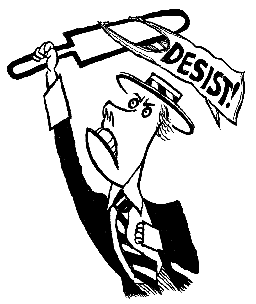
The lowest form of solidarity, I remember reading somewhere, is generational. What do you have to do, after all, to qualify as a “baby boomer”? Membership in that vast sodality means that you were in your late teens or early twenties during the sixties: an underwhelming achievement that required no more than being able to say “present.” As someone born in 1949, I prefer to consider myself not a mere sixties person but a soixante-huitard. If there didn’t happen to be French argot for this, I would still want to answer to the name “sixty-eighter.”
Finally, a reason to check your email.
Sign up for our free newsletter today.
For me, this date-stamped association of memories and ideas and bygone struggles has almost nothing to do with the checklist recently evoked onscreen by Tom Brokaw, which ran the gamut from the Tet Offensive and the murder of Martin Luther King to the images of Haight-Ashbury and the mystic lyrics of Buffalo Springfield. That year was for me a rite of passage, a sort of ordeal, as well as a kind of joy and liberation.
Like most years and most decades, it didn’t begin or end on strict calendar time. The sixties themselves didn’t get started until at least 1963, and the psychodrama of 1968 arguably opened with the death of Che Guevara in the fall of 1967. I myself would argue that it began earlier, with the fascist military coup in Athens in April of that year and with the first strong manifestations of open dissent in Czechoslovakia. If you were a real political soixante-huitard, which meant that you were in one way or another related to the New Left, what you looked for and hoped for was a resistance to both the Eastern and Western “blocs.” Sex, drugs, and rock and roll were strong options, but they were just that—optional. In my cohort, we kept our hair short and our demeanor non-psychedelic, the better to appeal to the workers at the factory gate, who, we thought, were about to see through the realm of illusion foisted upon them by a combination of consumerism and the Cold War.
Laugh all you like. You didn’t see the workers in that French plant in 1968, rearranging the big letters of the factory owner’s name (Berliet) so that the sign over the gate now read liberte. And perhaps you don’t recall the strikes in Poland and the accompanying protest from Warsaw intellectuals like Jacek Kuroń (still a bit of a Trotskyite in those days) that gave us the first premonitory shiver of Solidarnosc. I can remember them, all right, because they seemed dialectically congruent with the analysis of my own Marxist faction: that this was another 1848, or maybe 1905, or even conceivably a 1917. (The problem with the 1917 analogy was that most of us preferred Rosa Luxemburg and Leon Trotsky to Lenin.)
I’m quite serious about this: it might seem bizarre to you, but it was real enough to us. And almost every morning, my little transistor radio would wake me with seismic tidings: the black ghettos of America aflame; the mighty American army baffled in the Mekong Delta; the Portuguese empire shrinking under the pressure of guerrillas in Mozambique and Angola; the streets of Madrid and Barcelona filled again with anti-Franco protests; the students of Mexico City cut down outside the Olympic stadium. There were just not enough hours in the day.
Since I was a university student (at Oxford) during this time, it wasn’t just a matter of frantic and delighted meetings with “internationalist” visitors from other battlefronts, or of raising money for strikers and picket lines. We thought that our own struggle to change the campus rules was a part of the revolutionary agenda. And—unlike the pseudo-radical students of today—we wanted to be allowed to be grown-up rather than to claim another extended tranche of parental protection. Ask the dean’s office for protection against hurt feelings? No: we demanded the right to hurt the feelings and ruffle the susceptibilities of others. A tiny memory comes back to me. In proposing that my Oxford college no longer ban female guests from staying overnight, I came up with the slogan, “Equal Rights for Heterosexuals.”
As the Paris revolt faded from its May glory, and as the blooms of the Prague Spring began to feel a pinch, I vanished to Cuba and spent a hot summer in a camp in the province of Pinar del Río, where sixty-eighters of every stripe had forgathered, ostensibly to plant coffee but mostly to drink it (and rum) and to discuss new horizons of revolution. Cuba was torn between grim austerity for its people and flamboyant hedonism for its revolutionaries, and one’s elementary socialist principles managed to register the gross injustice of this even while hoping (perhaps) that the engine of history would make up the deficit. Meanwhile, of course and as ever, the struggle.
Cuba was an unusually good vantage point for the 1968 phenomenon since it advertised itself as a new beginning for socialism that would avoid the drabness and conformity of the Eastern bloc. I was able to test this proposition in practice and in two ways. At a “cultural seminar,” I heard the distinguished Cuban film director Santiago Álvarez say that any form of criticism was allowed in Cuba, except direct criticism of Fidel Castro. This seemed a rather large exception, but when I tried to be funny about it (so often a mistake in revolutionary circles), I had my first experience of being denounced, in unsmiling tones, for “counterrevolutionary” tendencies. It was a slight surprise to find that people really talked like that.
The second moment of truth came when the Warsaw Pact invaded what was then still Czechoslovakia. As a Trotsky-Luxemburg partisan, I had long bet that this invasion would happen and that it would bring the hoped-for split in the Left that would discredit what we called “Stalinism” for good. Many, if not most, of the comrades in our summer camp felt the same way. It was actually possible in Havana to dish out leaflets giving our views and to talk to Cubans who had demonstrated outside the Russian embassy. But Castro’s eventual verdict—in effect, a strong endorsement of the repression in Prague—was to install a gray regime in Cuba itself and to help dispel the Third-World-as-revolutionary-vanguard illusions of at least one section of the Left. When I last revisited Cuba, it was hard to buy a cup of coffee, so my efforts at planting the stuff, and in such hospitable soil, seemed a double waste of time.
Looking back on that year of color and rage and excitement and (yes) hope, I can now see well enough to separate the different kinds of revolutionary with whom I became acquainted. Some of one kind went on to become victorious rulers, either of nascent dictatorships in Vietnam and Angola or of nascent democracies in Spain, Portugal, Greece, and South Africa. Some of a second kind would invert the hieroglyph “68” on the odometer and become the triumphant figures of the anti-Communist revolution of ’89. (For this particular irony, see Tom Stoppard’s brilliant play Rock and Roll.) And some of another kind wound up either dead or in prison, having tried to launch movements of “armed struggle” from Northern Ireland to West Germany. The first two evolved a sort of social-democratic modus vivendi that has some battle honors to its credit; the third lot mutated into the fans of Saddam Hussein and the apologists for al-Qaida and the Muslim Brotherhood—in other words, into the most reactionary force on the planet. There are also soixante-huitards whose adventures are less well known and far from over. I have met them among the tiny minority, from Bosnia to Zimbabwe to Iraq, who have struggled to evolve a consistent antitotalitarian politics and to marry it to a thoroughgoing internationalism. One day, perhaps, their less glamorous story will also be told. The owl of Minerva, as Hegel put it, takes wing at dusk. Only at the close of an epoch can one begin to evaluate it.
At the time, I thought 1968 was the beginning of something. Later, I understood that I had instead been part of the end of something: the last gasp of red-flag socialism (which actually persisted until the murder of Salvador Allende in 1973 and the overthrow of Portuguese fascism in 1974). But the antitotalitarian ethos embraced by the best soixante-huitards remains an option, and I believe that it will have further opportunities to declare itself—in Cuba, to take one vivid and imminent example—long after the pseudo-revolutionary silliness has been forgotten.
Sex and Its Discontents

In the fall of 1968, I moved into a firetrap of an apartment in Cambridge with three other women. We were all juniors at Brandeis, a campus vibrating with rage over the Vietnam War as well as with the pleasures of the sexual revolution. One of my roommates, whom I’ll call L., was a particularly avid recruit in that revolution; she maintained a steady stream of male visitors to her room, which she had painted, in the spirit of the times, a rich, sensuous purple. But it was one of the Brandeis radical student leaders, today a prominent Democratic operative, for whom she pined.
I could see why. Like other young honchos of the New Left, he had a debater’s intensity that was as much an aphrodisiac for the sixties’ educated women as chiseled abs are for today’s (see Jane Fonda and Tom Hayden). He understood his alpha power. He wore the familiar costume of the genus “radical leader”: jeans low on the hips and black motorcycle boots, whose purpose, I now realize, was to display faux working-class virility, rather than to protect him on a vehicle that he probably didn’t know how to drive. For many months, he ignored L.’s flirtations, but one evening he finally shrugged off any gentlemanly compunction left from his midwestern Jewish boyhood, took off his boots, spent the night—and never had anything to do with her again.
L. had a generous, earth-motherish feeling for men that made her relatively immune to any discomfiture that she might have experienced after a wham-bam-thank-you-ma’am romp, and as far as I could see, the rejection did little to dull her enthusiasm for male company. But by 1968, a lot of women, especially postcollegiate veterans of the movement, were no longer feeling so accommodating. They were angry, and they focused much of their ire on their erstwhile bedfellows. That year, Voice of the Women’s Liberation Movement, an early example of the period’s many small feminist publications, gave its first Male Chauvinist of the Month award to Warren Hinckle, the editor of the leftist magazine Ramparts. Male chauvinism, the newly emerging women’s liberationists grumbled, infected the Vietnam protest as well as the bourgeois living room. What kind of revolution was it when guys made speeches and organized marches while girls typed up minutes and brewed coffee?
Women had a point: they had as much right to manage the revolution as to cater it. But they had another beef with their male partners in the New Left that was less amenable to the available political framework. The new sexual freedom that gave us L.’s one-night stands was breeding tensions that we grasped only dimly. At Brandeis, women were as likely as men to quote Herbert Marcuse, a recently retired professor and campus guru in absentia, about the possibility of “life without repression and anxiety” and the joys of “polymorphous perversity.” Yet it was becoming increasingly difficult to resist the conclusion that life without repression wasn’t fair. The Big Man on Campus in 1968 was carrying a volume of Frantz Fanon instead of a football, but he still had his pick of women whom he could discard at whim. The difference was that now they wore miniskirts and were willing to put out.
And the truth was, they didn’t have much choice. The Marcusian world turned out to have its own strictures, including that sex was a natural and easy pleasure with no important differences on that score between men and women. True, powerful (read: beautiful) women could ignore the rules if they wanted; men fell at the feet of one Brandeis princess, the daughter of an eminent physician, even though she was widely known to be an unrepentant virgin. Others, like L., were temperamentally suited to the changing mores.
But for most female mortals, the rules of the new regime were elusive at best. You kind of liked a guy you had just met, so what next? What did you do when he pressed, “Are you hung up or something?” The old order was built on guilt, shame, and inhibition; you sure didn’t want to go there. Susan Sherman, a self-professed radical poet I came to know years later when we both taught at the New School, wrote in America’s Child, her recent memoir, that though she didn’t have much interest in sex with the many men she befriended—she would soon come out as a lesbian—she “slept with all of them, finding that easier finally than saying no.” Only a miscarriage changed her strategy. A friend who was at Berkeley at the time remembers that at political demonstrations men would yell, “Chicks up front!” They knew that the police would shrink from bashing female demonstrators’ skulls, while they themselves could march on, free of all chivalrous demands. That’s what women wanted, too, wasn’t it?
In the most radical precincts of the Left, women went to inspired extremes to rid themselves of their sexual “hang-ups.” Bernardine Dohrn, Kathy Boudin, and their girlfriends in the radical Weatherman organization inaugurated a “Smash Monogamy” program requiring all members to sleep with one another; they wanted to wipe out “sick bourgeois habits.” In 1970, Katherine Ann Power, one of my classmates at Brandeis, joined the crusade by shacking up with a psychotic ex-con from the campus’s prisoner rehabilitation program. Before long, this former Denver Catholic school valedictorian and Betty Crocker Homemaker scholarship winner joined her paramour in a bank robbery that led to the death of a policeman, a father of nine.
Disenchantment may have been inevitable, but its timing turned out to be bad news for the nascent feminist movement. The premier women’s organization, NOW, had set up shop in 1966 as a civil rights group. Led by the middle-aged Betty Friedan, the group had spent its energies on abortion rights, combating workplace discrimination, and trying to get the Equal Rights Amendment passed. By 1968, however, twentysomething women, old enough to be veterans of movement sex and young enough to be prone to righteous anger, scowled at what they considered NOW’s narrow political agenda. To Friedan’s dismay, they organized “consciousness-raising” groups where, as they vented about male oppression, conversation often turned to their own disappointing sexual experiences.
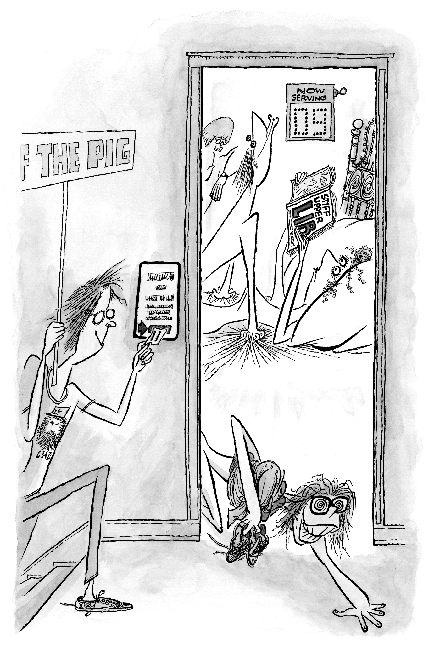
This could have been a promising moment. Women might have taken stock of how the sexual revolution had ignored female preferences—love, fidelity, male solicitude—in favor of self-centered, male-friendly amusement. Instead, they translated the inescapable difference between the sexes into political and pop-scientific grievance. The reason that women were unhappy with the new order was not that low-commitment sex was an easier game for men; it was that men were intent on denying women’s sexuality. The patriarchy had promoted “the myth of the vaginal orgasm,” these younger feminists explained. Men got what they wanted, but all women got were those lousy faked orgasms.
The most radical of these feminists turned the Weatherman’s libidinous experiment on its head by calling for an end to (hetero) sex. In 1968, the activist Ti-Grace Atkinson cut her ties with NOW after showing up in court in support of Andy Warhol attacker Valerie Solanas, author of the SCUM (Society for Cutting Up Men) Manifesto. Years later, at the New School, I met Atkinson, the daughter of a prominent New Orleans family and confidante of Simone de Beauvoir. She was elegantly regal, fiercely intellectual, and transparently neurotic; I remember feeling that this was a woman to whom something awful had happened. Yet Atkinson’s weirdness didn’t stop the sisterhood from listening intently as she pronounced marriage “legalized rape” and concluded—in her ultimate gift to womanhood—that “love has to be destroyed.”
Well, that didn’t happen. Nor, with all its permutations—lesbian feminism, difference feminism, lipstick feminism, what have you—did the movement for women’s rights ever come to a mature accounting of the sexual revolution’s drawbacks, which continue to perplex the lives of young women today. Social life on campus is still a man’s game, as described most recently by the young sociologist Kathleen Bogle: women face enormous pressure to “hook up” in casual encounters that they find dispiriting and unfair.
They can thank their parents for that.
The Spring of Ralph

The other day, I came across Mark Rudd’s website. The 60-year-old, now a teacher in an Albuquerque community college, recalls the heady days when he led Students for a Democratic Society at Columbia University. Retaining the solipsism of his youth, he still thinks of it as a moral crest: “I was always aware that our country was attacking Vietnam. I could be in the mountains, I’d be thinking about the war in Vietnam. I could be on an acid trip, I’d be thinking about Vietnam.” In his mind, Columbia, where he was then enrolled, stood for war and racism and had to be overthrown—a task that he attempted, with decidedly mixed results, in the student riots of 1968.
My memories of the Columbia student uprising are somewhat different: I think of April and May 1968 as the Spring of Ralph. I was then Time’s cinema critic. My family and I lived at 520 West 114th Street, just across from Columbia’s Butler Library. The campus was our backyard. Every day, my six-year-old daughter and three-year-old son wandered around the thick grass and admired the lush floral arrangements designed by Mrs. Grayson Kirk, wife of the university president. It was like living in a botanical showcase.
But there was a snake in this Eden: Columbia had recently bought our building, inheriting tenants unconnected to the university. The management was willing to wait us out, hoping that eventually we would make way for professors and students. Meantime, they made our lives as difficult as possible.
Down the street, for example, were some fraternity houses. The occupants played rock music at top volume every Friday and Saturday night, often until 3 or 4 am. Noise could be expected from young males with animal spirits, but what wasn’t expected was their indifference to elemental sanitation. Every spring, when the seniors graduated, they simply threw their mattresses out onto the street. There the beds sat for weeks, turning into flophouses for mice, rats, and roaches. The sanitation workers disdained to pick up such large objects, and the fraternities refused to hire private firms to haul them away. When my wife and I complained to Columbia’s Fraternity Office, we were told that we would have to contact the alpha chapters of each frat. And where were those chapters? Well, one was in Wisconsin, another in Ohio, another in Atlanta . . . in a word, the runaround. In two words: Get Lost.
Then there was the business of the fire extinguishers, huge devices hung in hallways, attached to several yards of coiled fire hose. One day, we tenants of 520 decided to test them. The hoses, probably undisturbed for two decades, fell apart in our fingers. A letter of complaint to the management at Columbia must have gone right into the nearest wastebasket; we never received the courtesy of a reply.
Still, the rent for our seven-room apartment was phenomenally low—$179 a month. We lived there happily, along with a score of tropical fish; Bingo, a black cat; and two gigantic bullfrogs, Ralph and Sadie, who dwelled in a 20-gallon tank. Ralph occasionally courted his inamorata with a guttural croak that sounded like his name. On Monday and Thursday mornings the sanitation department trucks came around, and they stimulated Ralph to greater decibel strength. As he heard the clatter of cans and the grinding of refuse he boomed, “Ralph! Ralph! Ralph!” If he were back in my grandparents’ pond, his calls would have carried for a mile.
The student protests began in April 1968. They took aim at several targets: a gymnasium that Columbia proposed to build in Harlem—a project that had been approved by community leaders seven years earlier, but that was now characterized as “Gym Crow” by the undergraduates; an affiliation between the university and the Institute for Defense Analyses, a weapons-research think tank; and, above all, the Selective Service System, which was drafting college-age men for Vietnam duty.
The time was right for rebellion: it was a benign spring, and there were “issues.” The students made the most of them, breaking windows, trampling any flowers within reach of their sneakers—jackboots would have been too warm for the weather—occupying offices, destroying papers, and, in general, making a major ruckus. So major, in fact, that Columbia authorities summoned the police. Hordes of outsiders began to arrive, among them leftist critic Dwight MacDonald, who announced that a friend had beseeched him, “You must come up right away. It’s a revolution. You may never get another chance to see one.” Like many another superannuated radical, MacDonald was unable to distinguish a revolt from a tantrum.
During the outburst, I walked down from our seventh-floor apartment to the street below. A group of wild-eyed students was outside, led by an agitated, barely coherent youth—Mark Rudd. He reminded me of Eddie Bracken, the star of Preston Sturges’s film Hail the Conquering Hero, a 4-F asthmatic who, for plot reasons, is mistaken for a genuine Marine warrior and goes along with the deception.
I crossed the street, cased the broken glass and swirls of paper, and returned to the front door of our building. Rudd was still there. “Are you part of the problem or part of the solution?” he demanded. I informed him that while I detested Columbia the landlord, I admired Columbia the institution of higher learning. “In that case,” he snarled, “you’re part of the problem.” He used the term “fascist” and a few other choice labels. I replied that I had two words for him and his ilk. He bristled. “No, not those words,” I told him. “The ones I have in mind are ‘the thirties.’ ”
Rudd had two expressions, blank and furious, and the first now appeared. “In the 1930s,” I shouted over the increasing crowd noise, “there were all sorts of insurrectionists who promised a New World, come the Revolution. You know what? The Revolution never arrived. A little later, the marchers abandoned their cause and wound up with real jobs. And they were damned glad to get them. Read some history now and then.”
“Never!” declared Rudd. It was unclear whether he meant getting a job or reading a book. “Never!” His admirers joined in, “Never! Never!” They crossed the street, broke the few intact windows, yelled at the cops, and started marching around the block urging student action, beginning with a refusal to attend classes. “Strike!” they shouted, like the chorus in a Clifford Odets play. “Strike! Strike!”
I went back upstairs to our apartment, where my kids looked down at the street, more bewildered than frightened. To them, it was theater—as it was to most of the participants. But as the world knows, that theater was to have enduring consequences. Today the spirit of liberal inquiry has trouble finding a place at Columbia.
One case in point: Jim Gilchrist, a speaker for the Minutemen, an independent group of American citizens who attempt to patrol the border between the U.S. and Mexico. He was invited to Columbia two years ago, but students hooted him down before he could complete his talk, in the best 1968-style intimidation.
Case Number Two: the university’s Middle East department, which became the subject of a 2005 documentary, Columbia Unbecoming, about the university’s anti-Israel professors. The film’s accusations aren’t surprising; the academic Left has long characterized the Jewish State as an oppressor.
Case Number Three: the speaking invitation Columbia recently extended to Iranian president Mahmoud Ahmadinejad, resulting in his on-campus screed—a screed made worse by the ineffective challenge of harrumphing university president Lee Bollinger.
Case Number Four: the Columbia campus itself, which was ugly, in every sense, for decades. When Grayson Kirk was forced from the university at the beginning of the next academic year, the aesthetic impulses of his wife also made an exit. The acreage is now grassy, but hardly the horticultural exhibit of yore.
Back in 1968, only a few observers understood what was happening and put the uprising in its proper perspective. As Rudd and the Ruddlets marched around the block, their strident shouts were met, inside our apartment, by another rhythmic chant: “Ralph! Ralph! Ralph!” The bullfrog assumed that garbage was rattling around. Even then he knew.
Paris in May
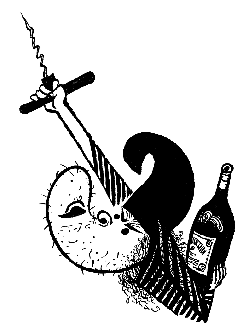
Forty years have gone by, but for those of us who took part, the memories are as fresh as ever. It lasted only three weeks, the blink of an eye in the vast scale of history. It wasn’t a revolution. It wasn’t a political event. It wasn’t violent. It had no leaders, no agenda; we still don’t have the words to describe what actually occurred. For want of anything better, we use the formulation the “events” of May 1968. As the political philosopher Raymond Aron wrote: “The students played the revolution”—the revolution, that is, was a kind of street theater.
Not much really happened, then, in those three weeks; basically, students stopped attending university lectures and workers followed suit by ceasing to work. They devoted their new free time to nonstop discussion of the meaning of life. Some student riots took place in two arrondissements; outside Paris, it was quieter. Still, if the “events” were a nonevent by any traditional measure, the world watched closely. Slogans painted on walls and an onslaught of posters with surrealist messages captured widespread attention. The most memorable posters were those asserting that it was forbidden to forbid. Others offered more cryptic slogans like sous les pavés, la plage (“Under the paving stones, the beach”) and cours camarade, le vieux monde est derrière toi! (“Run, comrade, the old world is behind you!”), an ironic paraphrase of Marxist ideology. Slogans were the only program, and they called for individual freedom, anarchy, nonviolence, and enjoyment of the here and now.
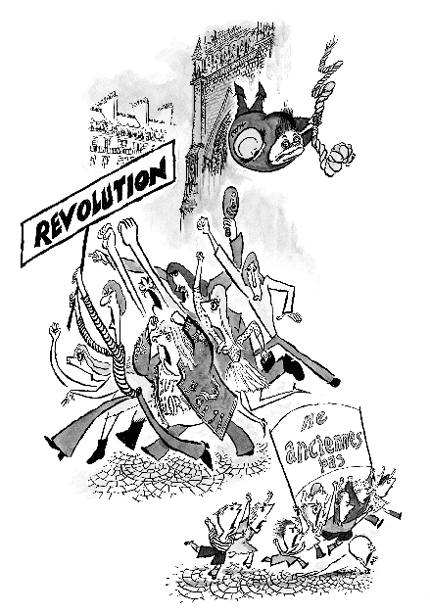
These messages weren’t spontaneous; they were the handiwork of small groups of intellectuals (I was among them) who drew inspiration from the poetry of André Breton and Left Bank anarchism. The slogans caught on because they reflected the mood of the time and the aspirations of an entire generation. May ’68 was the spontaneous outburst of the young: a revolution more generational than political.
What did it mean to be 20 in May ’68? First and foremost, it meant rejecting all forms of authority—teachers, parents, bosses, those who governed, the older generation. Apart from a few personal targets—General Charles de Gaulle and the pope—we directed our recriminations against the abstract principle of authority and those who legitimized it. Political parties, the state (personified by the grandfatherly figure of de Gaulle), the army, the unions, the church, the university: all were put in the dock.
Some historical precedents haunted us. We remembered that the French Revolution was the work of 20-year-old boys. So, too, were the Romanticism of the 1820s and the surrealist revolution of the 1920s. History does repeat itself. After long periods of confinement under tight social, economic, and military strictures, a new generation gets up and says: “Enough! No more!” Just as in 1789 and 1830, the young in 1968 didn’t want the same life that their parents had. For one thing, we wanted to work less.
The “events” died down one summer weekend, as unexpectedly as they had erupted. After three weeks, everything was back to normal, at least on the surface. Students returned to their classes, workers to their factories, curates to their parishes, and General de Gaulle to being president. Yet nothing was the same, in France or anywhere. Each country experienced its own version of May ’68. Student opposition to the Vietnam War eventually led to the American withdrawal. In Warsaw and Prague, student uprisings against Soviet occupation showed the world that Communist control in Eastern Europe was tenuous. In Latin America, Paris ’68 veterans set to work fomenting social revolutions.
Yet the profound impact of May ’68 went beyond local circumstances: it radically changed customs, values, and social relations in the West. In short, an individualistic society replaced the hierarchical one. Individualism pervaded the private domain. May ’68 was the moment when sexual liberation coincided with the availability of the birth-control pill. One of the sparks that set off the “events,” in fact, was an altercation between the student leader Daniel Cohn-Bendit and the French minister of education over banning male university students from women’s dormitories at night. The new sexual freedom also reduced the importance of marriage, and divorce eventually became commonplace.
Authoritarianism in business, too, began to founder, and a more participatory management structure came to replace employers’ old hierarchies. Many ’68 leaders became entrepreneurs and contributed to the new managerial style. Churches followed the antiauthoritarian trend, carrying forward the liberalization articulated at the Second Vatican Council. Universities around the world, in varying degrees, broke away from the mandarin system: students now had to be consulted and teaching made more participatory. The aftershocks affected political life, too. Governance became more relaxed, more focused on citizens’ daily concerns. Gaullism, the legacy of the French monarchic tradition, was unable to withstand the impact of May ’68. De Gaulle resigned a year later.
In the ideological world, Marxism was the most obvious victim. The May ’68 leaders were anti-Communist. Those who claimed to be Maoist, as some did (without any understanding of Maoism’s true nature), were, above all, anti-Stalinist. The revolts in Eastern Europe rendered Marxism comatose, both as an ideology and as a mode of governance. While another 20 years would pass before the Communist Party gave up power in Eastern Europe, the seeds of its demise were sown in ’68. True, there were a few deviations: the Red Brigade in Italy, the Baader-Meinhof Gang in Germany, and the guerrillas in Latin America. But these were ideological last gasps.
Forty years later, the instigators of May ’68 are a satisfied, comfortably settled lot. They more or less achieved their objectives in Western societies. They must have had some leadership qualities after all! But the denigrators of May ’68 have not conceded. Some seem to believe that Western civilization crumbled in those three fateful weeks. It’s true that the West no longer identifies with the majesty of a colonial power imposing its civilization on the rest of the world. The West is now more aware of its own contradictions, more respectful of the diversity in its midst. Yet what is Western civilization if not the unique capacity for self-examination?
How the Press Got Political

When I graduated from college in 1974, my fellow students and I had just ended the war in Vietnam and ousted President Nixon,” New York Times publisher Arthur “Pinch” Sulzberger, Jr. memorably proclaimed to the 2006 graduating class of the State University of New York at New Paltz. “We entered the real world committed to making it a better, safer, cleaner, more equal place. We were determined not to repeat the mistakes of our predecessors. We had seen the horrors and futility of war and smelled the stench of corruption in government. Our children, we vowed, would never know that. So, well, sorry. It wasn’t supposed to be this way.”
The speech was widely derided as drenched in the moral self-congratulation and raging narcissism for which we boomers are renowned. But in fact, Sulzberger was too modest. Our generation may not have changed the world, at least not to his grandiose specifications, but we certainly changed journalism.
From his lofty inherited perch, Pinch has arguably had more to do with that transformation than anyone. But a great many of us who similarly emerged from the campus culture of the sixties did our bit—and then some. For as we came to populate and then dominate the nation’s newsrooms, we remade the news media in our image. John Corry, a 28-year New York Times veteran, says, “Always before, the premise was that as a journalist your job was to tell readers what had happened in the world in the last 24 hours. Today, you can pick up the paper and find the entire front page reflecting nothing but opinion masquerading as news.”
Consider, for example, the Times’s longtime Supreme Court correspondent, Linda Greenhouse (Radcliffe, ’68). Though Greenhouse covered the Court’s deliberations on the highly contentious issue of abortion, she famously marched in a pro-choice demonstration and, in a much-remarked-upon 2006 speech at Harvard, denounced the Bush administration’s “sustained assault on women’s reproductive freedom.” She made no secret, either, of her contempt for the administration’s legal positions on terrorist rights and interrogation techniques—opining in the same speech that the government had “turned its energy and attention away from upholding the rule of law and toward creating law-free zones at Guantánamo Bay, Abu Ghraib, Haditha, and other places around the world”—though these, too, were matters under her journalistic purview. In the old days, a reporter so clearly compromised would likely have had trouble holding on to her job. But Greenhouse has won a Pulitzer Prize, and she continues to enjoy widespread influence among her journalistic peers, who maintain that her personal views have no bearing on her reporting.
In the sixties, for a lot of us, the business of disguising personal conviction as news was far from disreputable; it was the whole point. That’s why, one January morning in 1968, my colleagues and I at Student Life, the venerable paper at California’s little Pomona College, got such a kick out of finding ourselves the subject of a furious editorial in the Pomona Progress-Bulletin, the daily serving the adjacent city of some 80,000. According to the editorialist, we weren’t merely troublemakers—that we already knew, and reveled in the fact. We were Communists.
Though the charge was ludicrous, the source of the error was clear: we had lately created “news” by urging the Communist Party of Northern California to come to campus to sign up students for summer jobs recruiting migrant workers—and then splashed across our front page its letter to the school’s administration requesting permission to do so. We’d done this both because we thought it was a hoot and because we wanted to give the lie to the administration’s claim that Pomona’s jobs-placement office was ideologically neutral and available to all comers—an assertion that it had made after student activists disrupted recruiting efforts by the despised war-profiteering corporation Dow Chemical.
That some of us journalists were among the students who’d done the disrupting troubled us not in the least. Conflicts of interest were for politicians and big-business types, not young idealists like us. In this, we were like countless student journalists across the country in that heady time. Leftist politics were the order of the day (along with sex, drugs, and rock and roll). Even those college papers that played it reasonably straight were inevitably staffed by young people who, caught up by the possibilities of this new world we were making, busily editorialized—sometimes even in editorials—about race, the war, and the dawning women’s movement.
Little had changed when I entered journalism school at Columbia a few years later (class of ’71). My fellow students, almost without exception, were committed anti-warriors and unabashed partisans of the Left. But surprisingly, so were most of the faculty, if to a somewhat lesser degree. Students chose among three concentrations—newspapers, broadcast, and magazines—and the faculty came overwhelmingly from those outlets deemed the models of excellence in each: the New York Times, CBS News, and The New Yorker.
The governing assumptions on hot-button issues like war, peace, and race were those of New York’s tony left-liberal elite. Our chief speakers that year were Dan Rather, Walter Cronkite, Tom Wicker, and Gloria Steinem. Evidently, no one thought we might benefit from exposure to an occasional media conservative, let alone Tom Wolfe, who’d recently skewered New York’s parlor liberals with such pitiless accuracy in “Radical Chic.” We heard endlessly from Fred Friendly, head of the school’s broadcast division, of his battles alongside Edward R. Murrow for economic justice and against the monstrous Senator Joseph McCarthy. On our reporting assignments, we were loosed on city streets to cover the disadvantaged and unearth the root causes of their distress.
The truth is, the sixties’ generation of journalists had plenty of enablers among our predecessors, who eased our way into the mainstream. At the highest echelons, journalism had always had a strong left-liberal streak, exemplified in Walter Duranty’s see-no-evil reporting from Stalin’s Soviet Union, Herbert Matthews’s cheerleading for the young Fidel Castro, and Cronkite’s declaration in 1968, during the Tet Offensive, that we were “mired in stalemate.” Of course, it’s also true that back then, conservatives like NBC’s Chet Huntley and ABC’s Howard K. Smith could be the faces of their news divisions, and newsrooms across the country were still largely staffed by just-the-facts types with contempt for the young, agenda-driven kids spilling out from places like Columbia’s journalism school. But they were already a vanishing breed. Vietnam, for all its horrors, had turned journalism from a largely blue-collar field into a glamorous, exciting, culture-altering profession.
Watergate completed the shift. If the Times’s David Halberstam, who’d expressed the earliest, strongest skepticism about the war, was the ideal for his generation of reporters, the Washington Post’s Bob Woodward and Carl Bernstein were the prototype for the next. These guys were not just great reporters; they were something entirely new: celebrity journalists. They signed lucrative book and movie deals, blazing a trail that more than a few others would follow. As the late David Shaw, the Los Angeles Times’s gifted media reporter, would later observe, a key “Woodstein” legacy has been masses of ego-driven journalists “more eager to return their agents’ calls than their sources’ calls, more interested in speaking fees than editors’ suggestions, more determined to see themselves portrayed on the silver screen than to see their reporting through to the end.”
Another aspect of this legacy was a conviction that the powerful, in business as well as government, are inherently corrupt and that it’s the media’s job to expose them. While such an assumption was a reflection of the prevailing hip cynicism and has served over the years to undermine public faith in essential democratic institutions, we journalists have always cast it in terms of purposeful idealism—especially when the target is on the right. “It is so hard, I think, for young people we know who work here at CNN and other news organizations to even imagine what Watergate was like,” anchor Judy Woodruff breathlessly put it not long ago. “To have a White House come undone, an administration come undone, because of some news reporting.” Yet even Bernstein has come to decry the “gotcha” mentality spawned by Watergate, recently telling an interviewer, “I think that the real trends in journalism in the past 30 years have been toward gossip, sensationalism, manufactured controversy.”
In the summer of 1972, while Woodward and Bernstein were still alone among the national media in doggedly pursuing the Nixon gang, a dozen or so of us were 100 miles away in Richmond, Virginia, launching an alternative weekly called the Richmond Mercury. The Mercury actually featured some decent local reporting, but many column inches were also devoted to such matters of community interest as Watergate and feminism. Naturally, we went after Republicans with particular relish. My own contribution was a hit piece on William Scott, the GOP congressman running that fall for the Virginia Senate seat held by a moderate Democrat. Scott was a fat target: an unwavering Nixon ally, undistinguished, and widely disliked by his colleagues. In fact, Washington Monthly had already savaged him a few years earlier. All I had to do to portray him as a mean-spirited, irredeemably incompetent nincompoop was reinterview those sources and add a few of my own. My Scott piece received ardent praise from colleagues and readers, proving, in case there was any doubt, that this kind of journalism had very little downside.
By early 1974, I was at a magazine in New York called New Times, brought there by my closest friend from the Richmond paper, Frank Rich. Featuring highly regarded journalists like Jimmy Breslin and Murray Kempton as contributing editors, New Times aimed to be hip and forward-thinking, and young editors like Frank and me had plenty of freedom. Thus it was that we hit upon the idea of resurrecting Bill Scott, now Senator Scott, as the subject of a cover story. We would call it “The Ten Dumbest Congressmen” and crown Scott “The King of Dumb.” Since I obviously couldn’t do essentially the same piece again, the assignment went to the magazine’s newly minted Washington correspondent, Nina Totenberg, and I gave her all my notes. She did a masterly job, not only hunting down new material on the hapless Scott but also including among her nine other victims a few Democrats, for “balance.”
We could scarcely believe what came next. Scanning the masthead of this obscure little magazine and finding his old nemeses from the Mercury, the infuriated Scott called a press conference, thundering that this was all the doing of some left-wing kids from Richmond with an agenda—thereby turning it into a national story and confirming the thesis of the piece.
Scott never lived it down—even his obituaries mentioned the controversy. But what was never noted—there or anywhere else—was that he was right.
From the Danube to Chicago

The event seemed so wildly improbable that I can still remember it vividly 40 years later. On a sunny day in September 1967, I found myself on an exclusive cruise up the Danube River in Czechoslovakia. My fellow passengers were 40 American New Leftists and antiwar activists, plus about three dozen representatives from the North Vietnamese government and the National Liberation Front of South Vietnam (NLF), more popularly known as the Vietcong. As our boat meandered slowly along the river, the Americans and the Vietnamese broke up into little groups and awkwardly went through the motions of trying to get to know each other—a process made even more difficult by the shortage of good translators.
At the time, I was an editor and writer for Ramparts—the country’s only mass-circulation leftist publication, with a quarter of a million readers—and I had just written an exposé of the CIA’s penetration of the National Student Association. I assumed that this contribution to the radical cause was why activist Tom Hayden had tapped me to go to a “peace” conference with the Vietnamese in the Slovakian capital of Bratislava. Hayden had apparently been given the exclusive franchise for arranging contacts between the antiwar movement and the North Vietnamese government; and for the first time, high-ranking NLF representatives would also be included in discussions with American peace activists. I was told that the Bratislava conference, part of which took place on the Danube cruise, would help speed the end of the Vietnam War.
The Americans who showed up in Bratislava were a motley combination of long-haired hippie types from the counterculture and the emerging underground press, earnest community and antiwar organizers, and a handful of New Left journalists and academics. Most were in their mid- to late twenties. Our Vietnamese counterparts were older, hardened revolutionaries, dressed in almost identical black pants and jackets, and they seemed to be under strict Communist Party discipline. The star of the Vietcong delegation was the commanding Madame Nguyen Thi Binh, the NLF’s titular foreign minister and soon to be a principal negotiator at the real peace conference in Paris. We were told that several of her companions were guerrilla fighters who had come to Bratislava after a long, dangerous journey from the “liberated zones” of South Vietnam. I recall one of the NLF delegates’ telling us about an operation that he participated in against a U.S. military base. North Vietnamese delegates gave us fragments of American bombs as tokens of their affection.
Historians have designated 1968 as the year when a violent whirlwind swept through the nation—when things finally fell apart, to paraphrase Yeats. But the whirlwind was already blowing during our five-day get-together with the Vietnamese Communists in 1967. Hayden, the unelected leader of the American group, was already famous as one of the founding members of Students for a Democratic Society (SDS) and the principal author of the 1962 Port Huron Statement, which became the official manifesto of the New Left. By the time he got to Bratislava, however, Hayden seemed uninterested in his own document’s call for a new kind of “participatory democracy” or indeed in any kind of friendly persuasion in politics. Just two months earlier, he had been in the thick of the Newark race riots, which he encouraged with words and perhaps deeds. “A riot represents people making history,” Hayden wrote in a notorious article for the New York Review of Books, celebrating the weeklong outburst of violence and mayhem that led to the deaths of 24 blacks and destroyed a community. The issue’s cover illustration was also by Hayden: an accurate diagram of a Molotov cocktail, one of the rioters’ lethal weapons.
I was assured that the conference would issue no joint political statement, other than affirming the need for ending the war. But from day one, it was clear that Hayden and some of his acolytes were trying to move our group toward a more “advanced” position than the one still maintained by the mainstream U.S. peace movement. Hayden wasn’t interested in ending the war so much as making an alliance with the other side. At one of the final plenary sessions, he gave a long speech summarizing the conference’s accomplishments and emphasizing our need to work together for the common objective: a Vietnam liberated and unified—by the Communists.
Then, in his peroration, Hayden dramatically recounted the climactic episode from the 1960 movie Spartacus, in which the victorious Roman centurions, having defeated the rebellious slave army, are trying to find the revolt’s leader among a crowd of prisoners. The Roman commander announces that unless “the slave named Spartacus” steps forward and turns himself in, every one of the captured slaves will be executed. At that point, one after another, each of the slaves takes two steps forward and announces, “I am Spartacus.” The Romans then crucify all of the prisoners, including the real Spartacus. The United States was trying to annihilate our Vietnamese brothers and sisters in a murderous colonialist war, according to Hayden. Thus each of us in the American antiwar movement must now step forward and confront our own government, proclaiming: “Take us, too. We are all Vietcong now.”
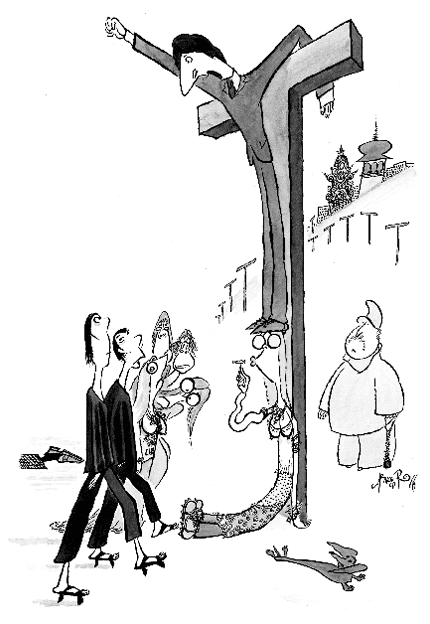
Hayden’s speech was almost comical, yet chilling at the same time. On the one hand, it was characteristically American to resort to a popular Hollywood movie for stirring revolutionary images. The “I am Spartacus” sequence was a historical fiction; penned by screenwriter Dalton Trumbo, a Communist Party member blacklisted in the 1950s, it was perfectly consistent with the New Left’s tendency to enact the revolution as theater. But Hayden was also deadly serious about his “We are all Vietcong now” announcement, and many of the radical antiwar activists in Bratislava supported his formulation, with all of its potential implications.
Sometime later, after the events of 1968, I would look back at Hayden’s Bratislava speech as a turning point not only in the short history of the New Left but also in the history of American radicalism. Protesting against America’s wars has an honorable tradition, running from Thoreau to Eugene V. Debs and Norman Thomas. But starting with Hayden and continuing in the turbulent outbursts of 1968, that tradition of legitimate democratic opposition morphed into outright collaboration with the enemy. It wasn’t just that Hayden was rooting for the other side—abolitionist William Lloyd Garrison had done the same during the Mexican War—but that he was proposing to sabotage the American war effort by all means necessary. Soon enough, as members of the once-idealistic New Left and SDS crossed the line from dissent to treason, it became clear that those means included deadly violence. Within 18 months, some of Hayden’s followers were bombing military installations and public buildings in solidarity with their Vietnamese allies.
The liberal media’s misunderstanding of what the antiwar radicals were all about continued through 1968, and particularly in the commentary about the year’s two biggest explosions: in May, the student uprising at Columbia University; and in August, the violent street demonstrations at the Democratic Party’s national convention in Chicago. Tom Hayden was back in action for both events. He happened to be in New York when he heard about students’ seizing buildings and imprisoning a dean to protest Columbia’s decision to build a gymnasium in Harlem. Immediately, he rushed to the campus and joined a student “commune” barricaded in one of the buildings. Most of the Columbia student leaders were SDSers well versed in Hayden’s grand project to “bring the war back home.” The whole point was to provoke a confrontation with the New York police, the closest available surrogates for the U.S. military. In a firsthand report on the uprising for Ramparts, Hayden proudly noted that his younger disciples had scrawled on the walls of the occupied buildings an exhortation to “create two, three, many Columbias,” a play on Che Guevara’s call for “two, three, many Vietnams.” Columbia was merely another battle in the plan, and Hayden fantasized that “the U.S. must either change or send troops to occupy American campuses.”
For Hayden and the various violence-prone SDS factions, Columbia was a dress rehearsal for the biggest showdown of all—the Chicago Democratic convention. Hayden and Rennie Davis, his closest ally at Bratislava, set up shop in Chicago and spent four months planning a massive confrontation with the “war machine,” otherwise known as the Chicago Police Department. At Ramparts, we all knew what was coming, and we were determined to be there for the combat. Though the magazine’s balance books no longer looked promising, our flamboyant editor, Warren Hinckle, decided to bet the house on a special Chicago issue, modeled on Life magazine and reported from ground zero by almost the entire staff. Nearly a dozen reporters, editors, and photographers flew from our San Francisco offices to Chicago and set up shop in the luxurious Ambassador Hotel. We saw ourselves as both journalistic observers and participants, and we had no problem with the conflict of interest. We turned out a daily broadsheet that served as a community paper for the thousands of demonstrators, and we provided R & R for Hayden and some of the other celebrities.
But our plans for a journalistic bombshell fizzled. The special issue had some excellent action photographs, but the prose was pretty pedestrian and full of the usual tropes about the brutal Chicago police, the ruthless and corrupt Daley political machine, and the rigged Democratic convention. We didn’t dare touch the one big story that was ours exclusively: how a relatively small group of American radicals had made common cause with the enemy and was leading the Left toward self-destruction and nihilism.
The week of living high on the hog at the Ambassador pushed Ramparts closer to insolvency. The magazine was saved by one of the miracles of capitalism, Chapter 11 bankruptcy protection, and it survived for a few more years with an even more radical editorial policy. But I left Ramparts shortly after the Chicago issue. I didn’t announce any grand ideological reasons for my resignation, and I still considered myself somewhat on the political left for a few more years. But I knew that one couldn’t be in Tom Hayden’s left, or even the Ramparts left, and hope to tell the whole truth.
